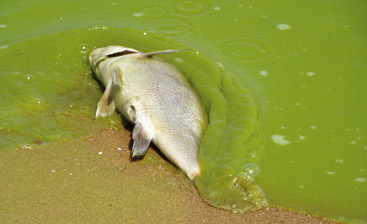Abstract:
This paper explores the interactions among scale and density economies, productive efficiency, water quality, and customer characteristics, and their impact on the costs of delivering treated drinking water. Implicit benefits of nitrogen abatement are also derived and hypothesis tests concerning their hypothesized drivers are conducted. Key findings are that nitrogen removal costs increase with rising raw water nitrogen concentration coming from agricultural activities, and that network density and system size matter in determining average total costs of community water systems. Merging water systems to take advantage of scale economies may be difficult due to the heterogeneity of the sector, however.
...
Location 1 has an estimated average total cost of $1,800 per million gallons of water per year, while locations 2, 3, 4, and 5 have an average estimated cost of $1,876, $1,798, $1,807, and $1,758 in 1995 dollars, respectively, or 2%, 6%, 2%, and 3% difference in costs between regions 1, 2, 3, and 4, respectively, relative to region 5. Comparisons of costs between location 2 and other regions are statistically significant in every case.
...

Increasing returns to economies of scale in water production are exhausted in the interval of 10,254 to 22,630 million gallons for the water sector overall. Thereafter, decreasing returns to scale set it.
...
Small water utilities have a marginal cost of nitrogen removal that is about 0.14 of that of large CWSs, that is, those that have 100,000 or more customers in their service area. Smaller water utilities remove 8.4 times more nitrogen than water utilities with a large customer base. The elasticity of variable costs with respect to nitrogen removal implies that variable costs increase by 0.03% for small utilities and 0.004% for large water utilities from increasing removed nitrogen by 1%. This difference points to increasing returns to scale in nitrogen abatement....
The elasticity of variable costs with respect to nitrogen removal decreases from small and medium and from small to large utilities. In contrast, the differences in elasticities are not significant from medium to large. These results point to an increase of 0.05% in variable costs for an increase of 1% in nitrogen removal for small utilities, 0.006% increase in variable costs per 1% in nitrogen abatement for medium ones, and 0.003% increase in variable costs for an increase of 1% in nitrogen removal for large CWSs. This pattern points to increasing returns of nitrogen removal being exhausted when, on average, the water utilities reach medium size
...
Elasticity of variable costs with respect to nitrogen concentration abatement is significant throughout all categories at a 1% level, and it varies from 0.0007 for low nitrogen abatement to 0.004 for medium levels and 0.05 for high levels. Thus, variable costs increase by 0.0007%, 0.004%, and 0.05%, respectively, from a 1% increase in nitrogen removal. Moreover, as the last column indicates, low levels of nitrogen removal are on average 0.04 mg/l N, medium are 0.21 mg/l N, and high are 2.73 mg/l N. In other words, areas where concentrations are highest experience a higher increase in percentage of costs, which we did expect.
...
Variable costs to CWSs increase given a 1% change in the nitrogen in the intake water of CWS by 0.002% in areas of low nitrogen concentration; they increase by 0.005% in areas of medium concentration, and 0.05% in high concentration areas. These elasticities differences are significant at the 5% level except for the difference between medium and high levels of concentration, which is significant at the 1% level. Higher nitrogen concentrations in the raw water are driven in part by the proportion of agricultural activities (crops and livestock) in a given region
...
Naidenko, Cox, and Bruzelius (2012) confirm that the cost of nitrate removal is indeed significant, with expenditures of close to $150 million annually in the most conservative estimate necessary to bring the nitrate levels to U.S. Environmental Protection Agency standards nationally. Other less conservative estimates suggest costs more than 30 times higher than that, with energy usage going up
to 2,100% because of water treatment for nitrate pollution in agricultural areas (Naidenko, Cox, and Bruzelius 2012). This cost indeed is “a significant financial burden for many communities.” Moreover, with “the exception of large animal feeding operations, farm businesses are exempt from the pollution control requirements of the federal Clean Water Act, and few states have authority to compel farm businesses to adopt practices that reduce the amount of farm pollution reaching our rivers, lakes and bays” (Naidenko, Cox, and Bruzelius 2012, 44). This point reinforces the Des Moines Water Works’ argument that the extensive and intensive impact of nitrogen pollution might best be brought under federal regulation.
In short, rural water utilities are under particular pressure because of their small size, small network density, and frequent location in areas where nitrogen concentrations in surface and groundwater are high. This pressure might entice CWSs to coordinate certain activities in order to lower costs. Differences in size, forms of ownership, and composition complicate the challenge faced by all CWSs, but rural ones especially, where phenomena such as climate change and intensification in the agricultural sector make it a priority to have sustainable drinking water systems
...
http://le.uwpress.org/content/93/1/12.abstractby Roberto Mosheim, and Marc Ribaudo
Land Economics http://le.uwpress.org via University of Wisconsin Press
Volume 93, Number 1; February 1, 2017; Pages 12-39
No comments:
Post a Comment